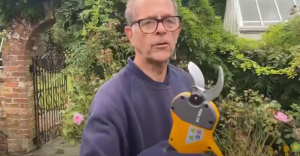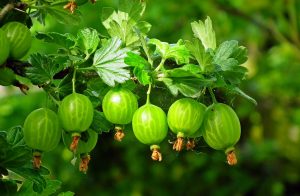Q: Dear Ken,I hope you can advise me. We purchased two climbing roses earlier this year in about May, pot grown. They are Zephirine Drouhin (thornless roses). We planted them either side of a newly installed arbour. The one on the right hand side of the arbour settled in fairly well but the one on the left started to fail. We then wondered if, because the posts of the arbour had recently been cemented in, there was lime seeping into the earth so we dug around them both carefully (this was only within a week or so of planting them) and put a polythene barrier between the earth they were in and the cemented area. Both plants have yellow leaves with brownish black spots and some of the leaves go completely brown and brittle and drop off, but the left hand plant has hardly grown and is almost completely covered in these diseased leaves, whereas the one on the right has almost reached the top of the arbour and had lots more healthy flowers through the summer and now. The leaves at the base of the plant are affected but most of the new growth leaves, though not really healthy are at least green. We have applied Top Rose once . We have also sprayed with a disease treatment that covered Black Spot. Should we just dig up and burn the plants, which we are loath to do, or cut them down or just wait for next year to see what happens? Other plants near them – a small alpine evergreen clematis, an Evening Primrose and a Verbena are doing well. A few of the leaves have been nibbled round the edges by something, would you have an idea of what might have done this? Both plants have nibbled margins on a few leaves, not many. The nibbles are too small to be leaf cutter bees. We enjoy your radio programme on Saturday mornings, when we have time to listen! And unexpectedly heard you on Radio just now when collecting our grandson from school. Many thanks for any help you may be able to give. Jackie and Brian Routledge
A: Zephirine Drouhin can sometimes be very slow to get going. The rose on the right I would say has done exceptionally well. We always seem to suffer with roses having good aspects, e.g. no thorns, but in return they’re slow to grow.
You are doing most things right. But remember feeding on a regular basis will be the answer to encourage the left hand rose. I would add bonemeal now and Toprose at the beginning of March when you could prune out spindly thin growth.
Blackspot will only be eradicated on new growth, so remove all the leaves that are still on the buses and cart well away from site. And if you have any bark or similar compost around them remove that as well as the spores can lay over-winter in that material. Start spraying for blackspot in February just as the shoots emerge and you will have to keep this up well into the season to eradicate the problem. Sadly, you also have some rust on those leaves which usually occurs on sickly plants. The same spray used for blackspot will also help with that.
The bites round the leaves look more like leafcutter bee to me but could be vine-weevil. Have you noticed this on any other shrubs as vine-weevil would be attacking those as well? More difficult to get rid of, again use a proprietary insecticide or nemotodes in the spring.
Personally I would have used a rose with thorns and more vigour, like Schoolgirl or Seagull.







